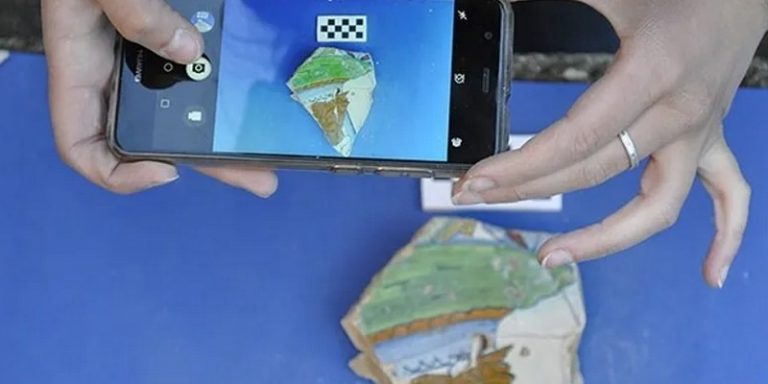
During the XXV meeting of the European Association of Archaeologists in Bern, an innovative application was presented. Named ArchAIDE, this tool designed by a team of researchers from the University of Pisa aims to revolutionize the world of archaeology with the help of artificial intelligence. In particular, the application can recognize fragments of ceramics during excavations.
Artificial intelligence increasingly useful in the world of archaeology
Since 2016, a team of researchers has been working on a European project that aims to design the ArchAIDE (Archaeological Automatic Interpretation and Documentation of Ceramics) application. Coordinated by the MAPPALAB Laboratory of the Department of Civilizations and Forms of Knowledge of the University of Pisa.
Normally, when an archaeologist wants to identify a fragment of ceramic or pottery that he has just discovered, he spends several hours or even dozens of hours leafing through the sketches. A time-consuming step, as Letizia Gualandi, from MAPPALAB at the University of Pisa, explains:
“The idea came to us when we were in the field. There is a lack of time and the analysis of pottery is long and difficult. The will of the ArchAIDE project is also to reduce the costs and time of information processing, to improve the reuse of data and to enhance the heritage in a sustainable way.”
An application that exploits an automatic recognition module
In order to function, ArchAIDE exploits artificial neural networks and an automatic recognition module. The archaeologist takes a photo of a fragment he has just found and sends it to the recognition module. The photograph is then stored in a database and can be used by archaeologists and amateurs alike. In addition to saving archaeologists’ time, the application adds value to the many archaeological clues found, with Letizia Gualandi stating:
“During archaeological research, thousands of ceramic fragments produced in the most diverse periods are found, from prehistoric times to the present day, almost like pieces of a puzzle that, if reconstructed, can provide a lot of information about life in past ages. With the app we have developed, the idea is to help archaeologists solve this ‘mess’ which currently requires a lot of time and very specialized skills, so much so that it is almost always impossible to catalogue all the pottery found.”
Several types of pottery identifiable to 75% accuracy
At present, the application identifies several kinds of pottery whether decorated or undecorated: Roman amphorae, sigillated ceramics from Italy, Southern Gaul and Spain, and majolica from Monteluppo, Barcelona and Valencia. Francesca Anichini of the University of Pisa, ArchAIDE project leader, discusses the accuracy rate of the application and its possible future improvements:
“The application has been developed to recognize both decorated and undecorated fragments. For the moment, the accuracy of the recognition is about 75%, but it will be thanks to the increasing use by users that the system will be able to improve its performance, and from this point of view we are already working on the construction of a network of universities, research centers and companies that will be able to contribute to the enrichment of the database.
Note that the ArchAIDE application is already available on iOS and Android, via the AppStore and GooglePlay.
Translated from Le projet ArchAIDE : une application de reconnaissance automatique des fragments archéologiques









